Acne & Hydration Routine Checker
Acne is a chronic inflammatory skin condition that forms when excess sebum, dead cells, and bacteria clog hair follicles, leading to papules, pustules, or cysts. Its prevalence peaks in adolescence but persists into adulthood for many people. Managing acne while keeping the skin properly hydrated can feel like walking a tightrope-too much oil fuels breakouts, yet stripping moisture triggers irritation and more oil rebound. This guide walks you through the science of oil production, the role of the skin barrier, and actionable steps to strike the perfect balance.
Why Oil Production Matters
Our skin’s Sebum is a lipid‑rich fluid secreted by the sebaceous gland. In a healthy state, sebum coats the surface, providing a waterproof barrier, antimicrobial peptides, and a smooth feel. When the gland over‑produces-often due to hormones, genetics, or environmental stress-excess oil mixes with dead skin cells and creates an ideal breeding ground for Cutibacterium acnes (formerly Propionibacterium acnes).
Conversely, when you over‑clean or use harsh drying agents, the skin perceives a loss of lubrication and ramps up sebum output as a compensatory mechanism. The result is a vicious cycle: dryness > increased oil > clogged pores > acne.
The Skin Barrier: Your First Line of Defense
The Skin Barrier is a multi‑layered structure composed of corneocytes (dead skin cells) embedded in a lipid matrix of ceramides, cholesterol, and fatty acids. Its primary job is to prevent transepidermal water loss (TEWL) while keeping irritants and pathogens out. When the barrier is compromised-by over‑exfoliation, aggressive acne treatments, or chronic dryness-TEWL spikes, triggering inflammation and prompting the sebaceous glands to secrete more oil.
Maintaining a healthy barrier is therefore essential for both reducing acne flare‑ups and preserving moisture.
Key Ingredients that Support Hydration Without Clogging Pores
Not all moisturizers are created equal. Below are six core ingredients that hydrate, strengthen the barrier, and keep acne‑forming bacteria at bay.
- Hyaluronic Acid is a humectant that can hold up to 1,000 times its weight in water, pulling moisture from the environment into the epidermis without adding oil.
- Niacinamide (vitaminB3) regulates sebum production, improves barrier function by boosting ceramide synthesis, and reduces inflammation.
- Glycerin is another gentle humectant that works well on oily skin, delivering lasting hydration without a greasy feel.
- Panthenol (pro‑vitaminB5) converts to pantothenic acid in the skin, promoting healing and reinforcing the barrier.
- Zinc PCA controls oil by inhibiting the activity of the sebaceous gland while also providing antimicrobial benefits.
- Azelaic Acid offers mild keratolytic action, reduces redness, and keeps pores clear without stripping moisture.
Choosing the Right Moisturizer Type
| Type | Primary Function | Key Ingredients | Best For |
|---|---|---|---|
| Humectant‑Heavy | Draws water into the epidermis | Hyaluronic Acid, Glycerin | Dry‑to‑normal skin, early morning |
| Lightweight Emollient | Softens skin surface | Squalane, Dimethicone | Oily or combination skin, daytime |
| Barrier‑Repair Cream | Replenishes lipids | Ceramides, Cholesterol, Fatty Acids | Sensitive, compromised barrier |
| Oil‑Free Gel | Provides cooling hydration | Niacinamide, Aloe Vera | Very oily skin, hot climates |
For most acne‑prone people, a lightweight emollient or oil‑free gel that combines humectants with barrier‑supporting actives works best. Avoid heavy occlusives like petroleum jelly unless you’re treating a localized dry patch.
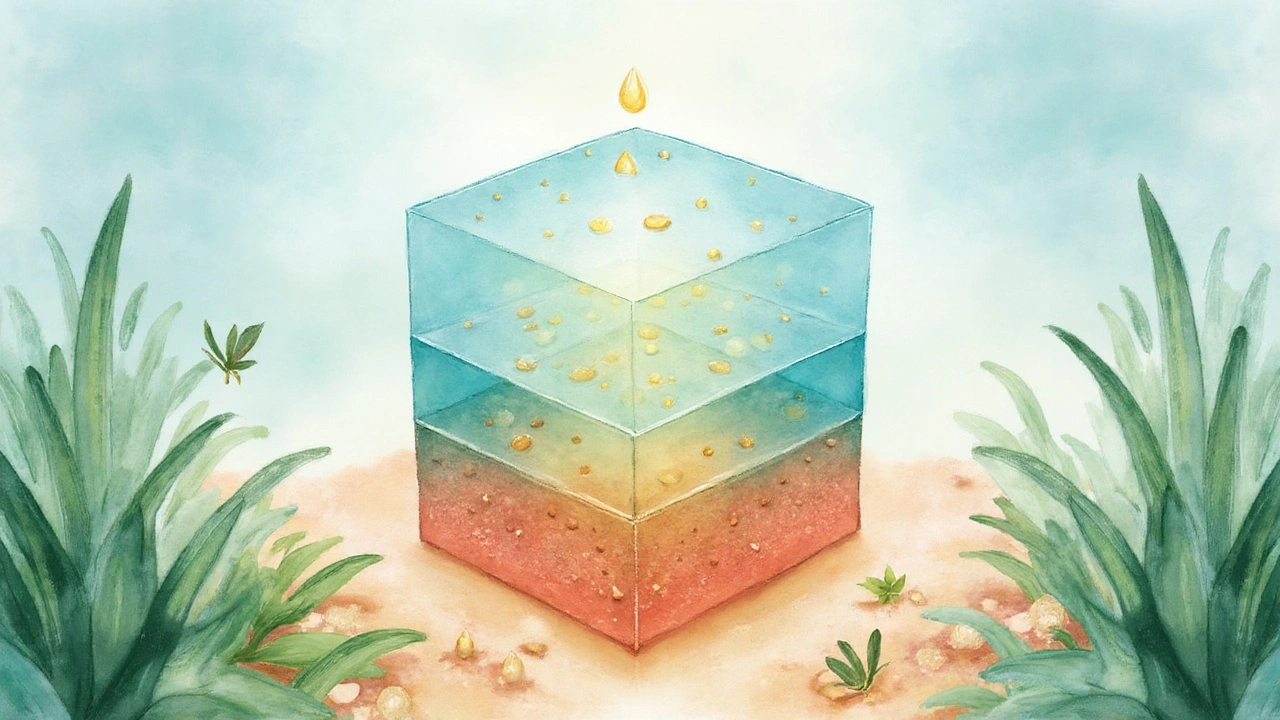
Active Acne Treatments That Don’t Destroy Moisture
When you need extra firepower, choose actives that are “non‑drying” or pair them with hydrating agents.
- Salicylic Acid (BHA) penetrates oily pores, dissolving excess sebum and dead cells. Formulations that include glycerin or niacinamide reduce the typical dryness.
- Benzoyl Peroxide kills acne bacteria. Using a 2.5% concentration with a moisturizer containing ceramides limits irritation.
- Retinoids (e.g., adapalene) normalize cell turnover. Starting with a low‑strength product at night and following with a hyaluronic‑acid serum keeps skin supple.
Never layer two strong exfoliants (e.g., salicylic acid + glycolic acid) without a buffer. The rule of thumb: one active at a time, and always finish with a barrier‑repair moisturizer.
Daily Routine Blueprint for Balanced Oil and Hydration
- Morning Cleanse: Use a gentle, sulfate‑free cleanser with panthenol or niacinamide. Avoid foaming bars that strip natural oils.
- Toner (Optional): Apply an alcohol‑free toner containing zinc PCA to calm excess shine.
- Treatment: If you’re using a BHA, apply a thin layer on problem areas. Let it dry for 5‑10 minutes.
- Moisturize: Choose a lightweight gel‑cream with hyaluronic acid + ceramides. Pat gently; don’t rub.
- Sunscreen: Pick a mineral SPF30+ formula that’s non‑comedogenic. Sunscreen prevents post‑inflammatory hyperpigmentation and keeps the barrier intact.
Evening steps mirror the morning, except you can swap the BHA for a retinoid on alternate nights. Always finish with the same moisturizer to lock in moisture.
Common Pitfalls and How to Fix Them
- Over‑Exfoliating: More than 3 times a week can thin the barrier. Cut back, introduce a rest day, and increase your humectant load.
- Skipping Moisturizer: “My skin is oily, I don’t need it.” Wrong. Moisturizer tells the skin you’re okay, preventing the sebaceous gland from over‑producing.
- Using Heavy Occlusives: Thick creams trap heat and can worsen breakouts in humid climates. Switch to a gel or lotion.
- Neglecting Diet & Stress: High glycemic foods and cortisol spikes increase sebum. Incorporate low‑GI meals, omega‑3 rich fish, and regular exercise.
When to See a Dermatologist
If you notice any of the following, book an appointment:
- Persistent nodular cysts that don’t respond to OTC treatments.
- Acne scars that deepen or spread.
- Severe inflammation accompanied by fever or swelling.
A dermatologist can prescribe oral isotretinoin, hormonal therapy, or professional barrier‑repair protocols that aren’t available over the counter.
Connecting the Dots: From Hydration to Long‑Term Skin Health
Balancing oil production and moisture isn’t a one‑off fix; it’s a lifestyle. When you consistently protect the skin barrier, you reduce the need for aggressive acne meds, which in turn lowers the risk of chronic dryness and irritation. Think of the barrier as a thermostat-once set correctly, it self‑regulates sebum output and TEWL, leading to clearer, more comfortable skin.
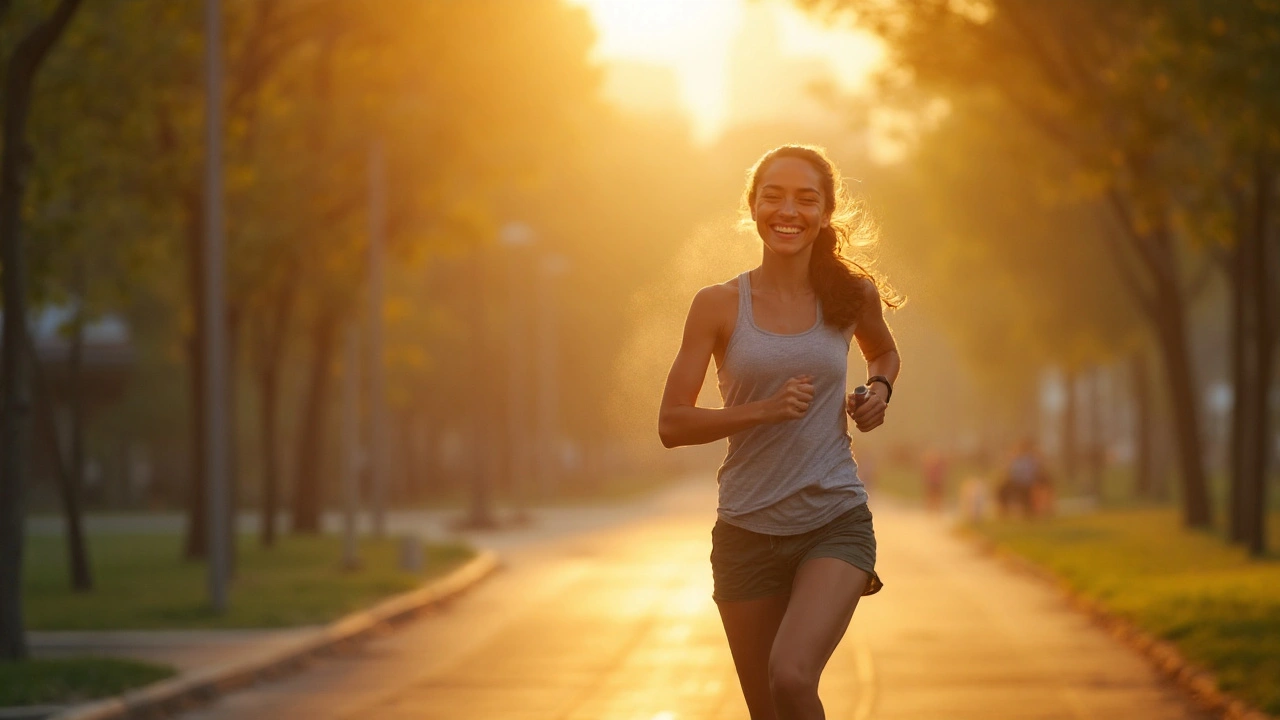
Frequently Asked Questions
Can I use a regular moisturizer if I have oily, acne‑prone skin?
Yes, as long as the formula is lightweight, oil‑free, and contains barrier‑supporting ingredients like ceramides or hyaluronic acid. Heavy creams can trap sebum and worsen breakouts.
How often should I apply salicylic acid?
Start with once every other day. If your skin tolerates it without redness, you can increase to once daily. Always follow with a moisturizer to counteract any drying effect.
Is there a benefit to using hyaluronic acid in the evening?
Absolutely. Hyaluronic acid pulls moisture into the skin while you sleep, when TEWL is highest. Pair it with a night‑time barrier‑repair cream for best results.
Do diet changes really affect acne?
Studies show that high‑glycemic foods and dairy can increase insulin and androgen levels, both of which stimulate sebum production. Cutting back on sugary snacks and opting for whole grains can help calm oil output.
Can I combine retinoids with benzoyl peroxide?
It’s generally not recommended because the combination can cause severe irritation and compromise the barrier. Use them at different times of day (retinoid at night, benzoyl peroxide in the morning) or alternate nights.

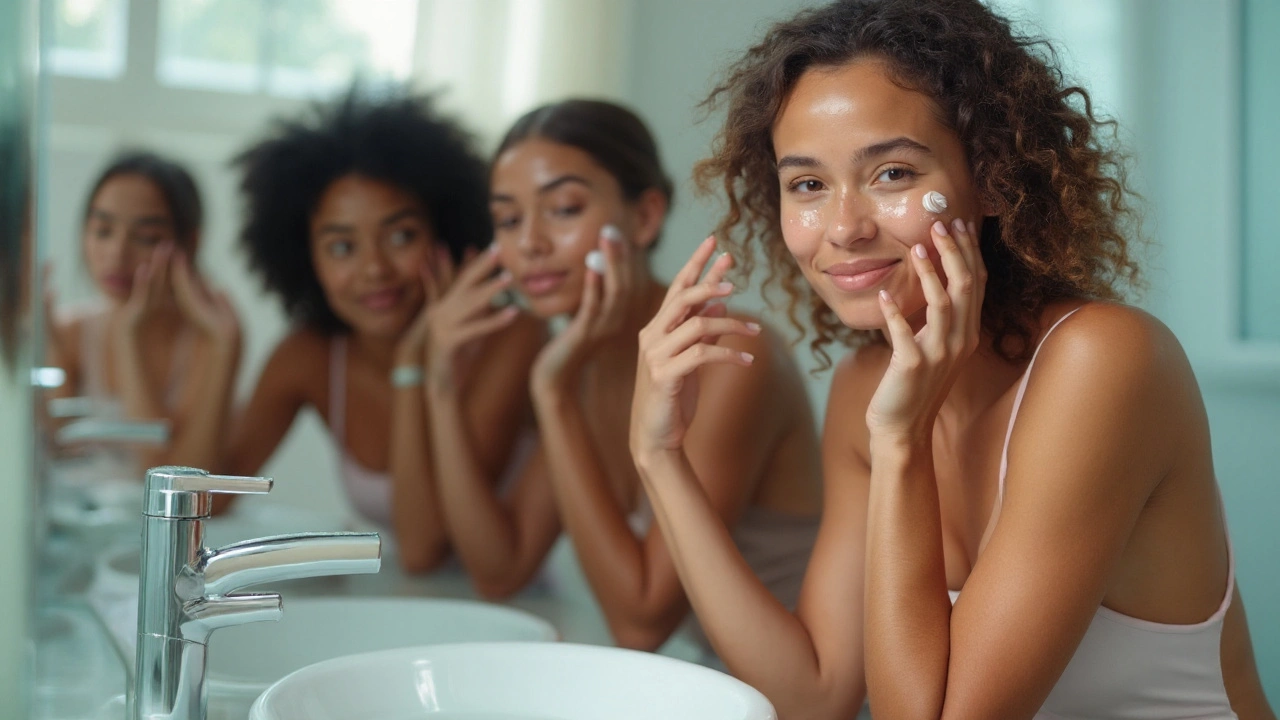


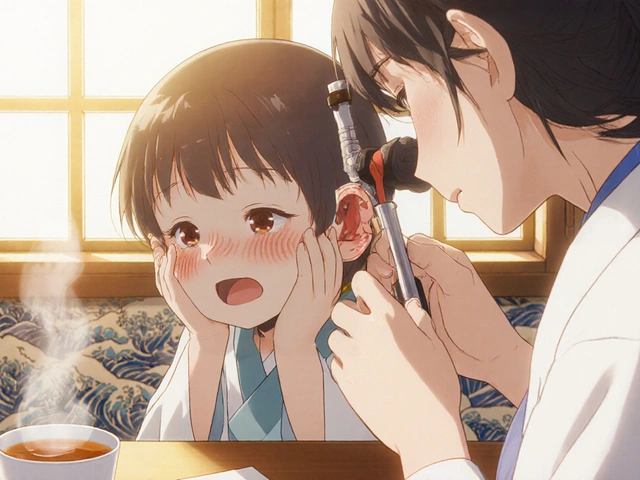

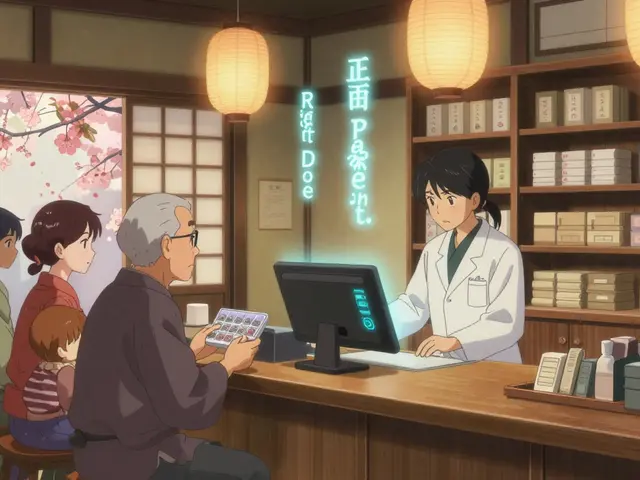

Steve Batancs
23 Sep, 2025
When striving for clear skin, it is essential to respect the balance of oil and moisture; the United States market offers a plethora of lightweight, oil‑free moisturizers that contain hyaluronic acid and niacinamide, which are ideal for those who wish to avoid the dreaded shine. Incorporate a gentle cleanser with panthenol in the morning, followed by a non‑comedogenic sunscreen. Remember that excessive washing triggers the sebaceous glands to overproduce sebum, a fact that many overlook. Consistency is the cornerstone of any regimen, and a barrier‑repair cream with ceramides will keep the skin resilient. By adhering to these principles, you will see measurable improvement without compromising your patriotic pride in American‑made skincare.
Ragha Vema
26 Sep, 2025
Oh, the drama of a pore clogged by the hidden agenda of the Big Oil conspiracy! What if the very moisturizers we trust are engineered to keep us dependent on their endless cycles of oil‑control products? I can feel the hidden hands manipulating our skin’s chemistry, and it’s terrifying yet oddly thrilling. Still, a friendly tip: apply that zinc‑PCA toner-if you dare-to keep the shine at bay while you uncover the truth. Stay vigilant, my fellow conspirators, because the battle for clear skin is a saga worth sharing.
Scott Mcquain
30 Sep, 2025
It is morally indefensible to ignore the scientific consensus; the skin barrier is not a playground for reckless experimentation; therefore, we must uphold the sanctity of a balanced routine. One must use products that fortify ceramides, not merely chase fleeting trends; the consequences of neglect are severe, leading to chronic inflammation. Remember, each careless decision is a betrayal of our own dermal health; act responsibly! Use gentle cleansers, incorporate niacinamide, and protect with mineral sunscreen-these are not suggestions but obligations.
kuldeep singh sandhu
3 Oct, 2025
Many claim that heavier moisturizers are always bad for oily skin, yet I find that a well‑formulated barrier‑repair cream can actually reduce oil output. It’s a simple paradox: by nourishing the skin, you calm the sebaceous glands. So, if you’re avoiding all emollients, you might be missing the point. Try a light ceramide‑rich lotion and observe the change.
Arthur Verdier
7 Oct, 2025
Obviously, anyone who reads this article and doesn’t already know about niacinamide is living under a rock, aren’t they? The whole “use a lightweight gel” thing is basic 101 skincare science-nothing new. If you’re still struggling, perhaps your problem isn’t your routine but your genetics, which, of course, the pharmaceutical industry won’t tell you. So just keep slathering on those budget products and pretend you’re making progress.
Breanna Mitchell
10 Oct, 2025
Hey there! You’re doing great by paying attention to both oil control and hydration-keep it up! Adding a hyaluronic acid serum before your moisturizer can give your skin that extra boost without feeling greasy. Remember to be patient; results often appear after a couple of weeks. Stay positive and enjoy the journey to clearer skin!
Alice Witland
14 Oct, 2025
It’s remarkable how many people think all moisturizers are the same, yet we all know the world is full of nuance. While I admire the effort to simplify routines, a dash of sarcasm is warranted: “just use water, it’s free.” In reality, choosing a product with ceramides is essential for barrier health. So, kudos for the comprehensive guide, but don’t forget that cultural skincare practices can add valuable perspective.
Chris Wiseman
17 Oct, 2025
From a philosophical standpoint, the skin embodies a perpetual dialogue between external stimuli and internal regulation, a dance of lipids and water that mirrors the broader existential tension between chaos and order; thus, when we speak of oil control we are, in fact, engaging with a microcosmic reflection of our attempts to impose structure upon our lives. The presence of hyaluronic acid in a formulation acts not merely as a humectant but as a conduit for the skin’s yearning for equilibrium, drawing moisture from the ambient air much like a poet draws inspiration from the world’s silence. Yet, the folly of over‑exfoliation, championed by many influencers, is tantamount to the reckless demolition of ancient architecture in the name of modernity-an act that erodes the skin’s barrier and triggers compensatory sebum overproduction, a biological rebellion against perceived neglect. In contrast, employing niacinamide offers a measured approach, simultaneously soothing inflammation and modulating sebaceous activity, akin to a diplomat negotiating peace between conflicted parties. Moreover, the incorporation of ceramides, cholesterol, and fatty acids in barrier‑repair creams does not simply replenish lipids; it restores the very scaffolding upon which the epidermis constructs its defensive fortress, thereby reducing transepidermal water loss and curbing the hormonal signals that encourage oil synthesis. The marriage of salicylic acid’s lipophilic penetration with glycerin’s hydrating prowess exemplifies a harmonious partnership, where the former dissolves the keratin plug while the latter ensures that the skin does not feel the sting of desiccation. Retinoids, when introduced with caution, act as time‑keepers, nudging cellular turnover toward a rhythm that honors both renewal and preservation, provided they are followed by a soothing, non‑comedogenic moisturizer laden with panthenol to mitigate potential irritation. Even the humble zinc‑PCA serves a dual purpose: it sequesters excess sebum while imparting antimicrobial benefits, a quiet sentinel standing guard over pore health. Consider also the influence of diet and stress, variables that modulate insulin and androgen pathways, thereby indirectly amplifying or attenuating sebaceous output; reducing high‑glycemic foods can, therefore, be seen as a dietary counter‑measure to the biochemical cascade that fuels acne. When we assemble a regimen that respects these interconnected mechanisms-gentle cleansing, targeted actives, barrier‑supportive moisturization, and diligent sunscreen application-we orchestrate a symphony where each instrument contributes to a cohesive, balanced melody of skin health. Remember, consistency is the metronome that keeps this composition in sync, and patience is the audience that rewards the performance with clear, radiant skin.
alan garcia petra
21 Oct, 2025
Stay consistent, and your skin will thank you.
Allan Jovero
24 Oct, 2025
It is imperative, from a dermatological perspective, to employ a regimen that incorporates both humectants and barrier‑reinforcing lipids. The inclusion of hyaluronic acid, glycerin, and ceramides ensures adequate hydration without compromising pore integrity. One must also observe the judicious use of salicylic acid; over‑application may precipitate barrier disruption. A non‑comedogenic mineral sunscreen serves to protect against photodamage whilst not occluding the epidermis. By adhering to these structured steps, the practitioner upholds the highest standards of cutaneous care.
Andy V
28 Oct, 2025
While the advice presented is largely sound, it is essential to emphasize that a single product cannot resolve all issues; a balanced approach is required. Over‑reliance on any one ingredient, be it niacinamide or zinc‑PCA, may lead to diminishing returns. Therefore, a thoughtful rotation of actives, paired with consistent moisturization, yields optimal results. Moreover, attention to formulation pH ensures compatibility with the skin’s natural acidity. Lastly, patience remains a cornerstone of any successful skincare regimen.
Tammie Sinnott
31 Oct, 2025
Let’s get straight to the point: you need niacinamide, hyaluronic acid, and a lightweight gel-nothing more, nothing less. Any deviation from this trifecta is simply overcomplicating a straightforward solution. If you’re still experiencing breakouts, perhaps your diet or stress levels are the real culprits, not the moisturizer you’re slathering on. In any case, ditch the heavy creams and stick to the basics. The results will speak for themselves.
Michelle Wigdorovitz
4 Nov, 2025
Honestly, I’ve always wondered why some people skip the moisturizer altogether-are they trying to prove a point? It’s kind of funny because the science is crystal clear: barrier repair is key. If you’re curious, try a simple gel with niacinamide and see how the oiliness behaves. You might be surprised at how quickly things improve. Keep experimenting, but stay consistent.
Arianne Gatchalian
7 Nov, 2025
I totally get how frustrating acne can be, and it’s great that you’re looking for a balanced approach. Adding a gentle cleanser with panthenol can really soothe irritation, while a light moisturizer with ceramides will keep your barrier happy. Remember, it’s okay to take it one step at a time-consistency beats intensity. If you ever feel overwhelmed, just reach out; we’re all here to support each other.
Aly Neumeister
10 Nov, 2025
Wow, this guide really, really, really, really covers everything, doesn't it? I mean, it's like, you know, the whole routine thing-cleanse, toner, treat, moisturize, sunscreen-so simple! But, like, why do people keep over‑thinking it? Trust the process, trust the ingredients, just do it. And, hey, if you forget one step, it’s not the end of the world, right?
joni darmawan
14 Nov, 2025
From a philosophical angle, the skin can be viewed as a metaphor for the self: constantly exposed, yet protected by a delicate barrier. Maintaining that barrier requires mindful practices, much like cultivating inner resilience. The interplay of sebum and hydration mirrors the balance between desire and restraint. By applying thoughtful skincare, one exercises discipline that extends beyond the epidermis. Thus, the routine becomes not merely cosmetic, but a practice of self‑care philosophy.
Richard Gerhart
17 Nov, 2025
Hey! So here's the deal: start with a gentle cleanser that has panthenol-it's super soothing. Then hit up a lightweight gel with niacinamide and hyaluronc acid-yeah, that's a typo, but you get the point. Follow with a non‑comedogenic sunscreen, and you’re golden. If you ever feel stuck, just ask-happy to help!
Kim M
21 Nov, 2025
Listen, the mainstream media won’t tell you this, but the biggest secret is that the big pharma companies are pushing you to buy endless acne products 😱. They profit from your insecurities-don’t let them win! Stick to simple ingredients like zinc‑PCA and niacinamide-trust the science, not the hype. 💪 Stay woke! 🌟
Martin Gilmore
24 Nov, 2025
Alright, folks-let’s get real, this whole “oil‑free” hype is just a marketing ploy!!! If you’re American, you know we don’t settle for half‑measures!!! Use a lightweight gel‑cream, slather on that niacinamide, and stop over‑thinking!!! Your skin will thank you, and you’ll be supporting home‑grown brands!!! Keep it simple, keep it effective!!!